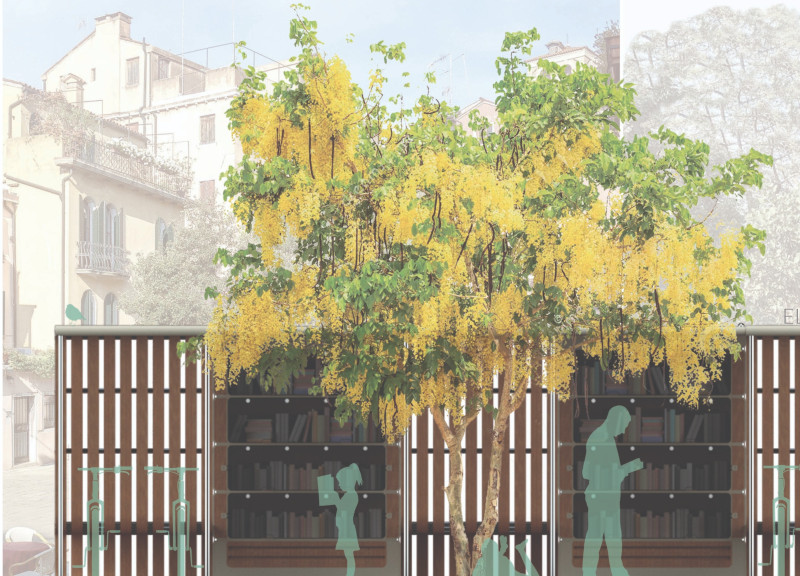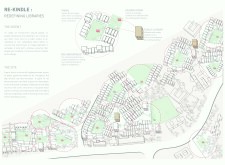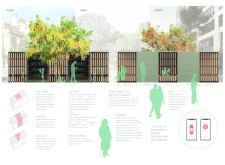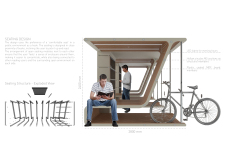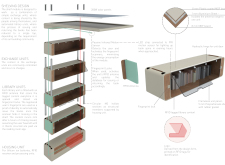5 key facts about this project
RE-KINDLE aims to redefine how libraries function by placing reading spaces within public parks. By doing this, it seeks to make literature more accessible and encourage community involvement. The design encourages everyday interactions with reading, allowing people to see books as a natural part of their lives while enjoying the outdoors.
Design Concept
The reading room serves as a bridge between the community and local libraries, promoting exchange and collaboration. By locating this space in a park, it taps into the natural social dynamics that occur in such settings. This makes it easier for individuals to incorporate reading into their daily routines and engage with each other in a meaningful way.
Architectural Features
The design includes a semi-open sheltered space featuring modular seating and shelving. This creates a flexible environment where people can study alone or gather with friends. The seating areas are designed to fit two people and are equipped with motion-sensing lights to ensure good visibility during the evening. This attention to lighting enhances safety and encourages more prolonged use of the space.
Sustainability and Infrastructure
Sustainable infrastructure is a key consideration in the reading room design. Bicycle stands are incorporated into the seating modules, promoting eco-friendly transportation. Additionally, solar panels and battery storage ensure that the reading room remains functional at all times. These elements highlight a commitment to energy efficiency and environmental sustainability.
Natural Elements
A significant aspect of the design is the inclusion of a tree, which symbolizes the reading room while providing shade and comfort. The tree, inspired by the Amaltas (Cassia fistula), adds to the visual appeal of the area. Its changing features throughout the seasons make the reading room adaptable, enhancing the overall experience for users. The introduction of natural elements not only beautifies the setting but also helps create a calming atmosphere, inviting people to explore literature amid the park’s greenery.


